



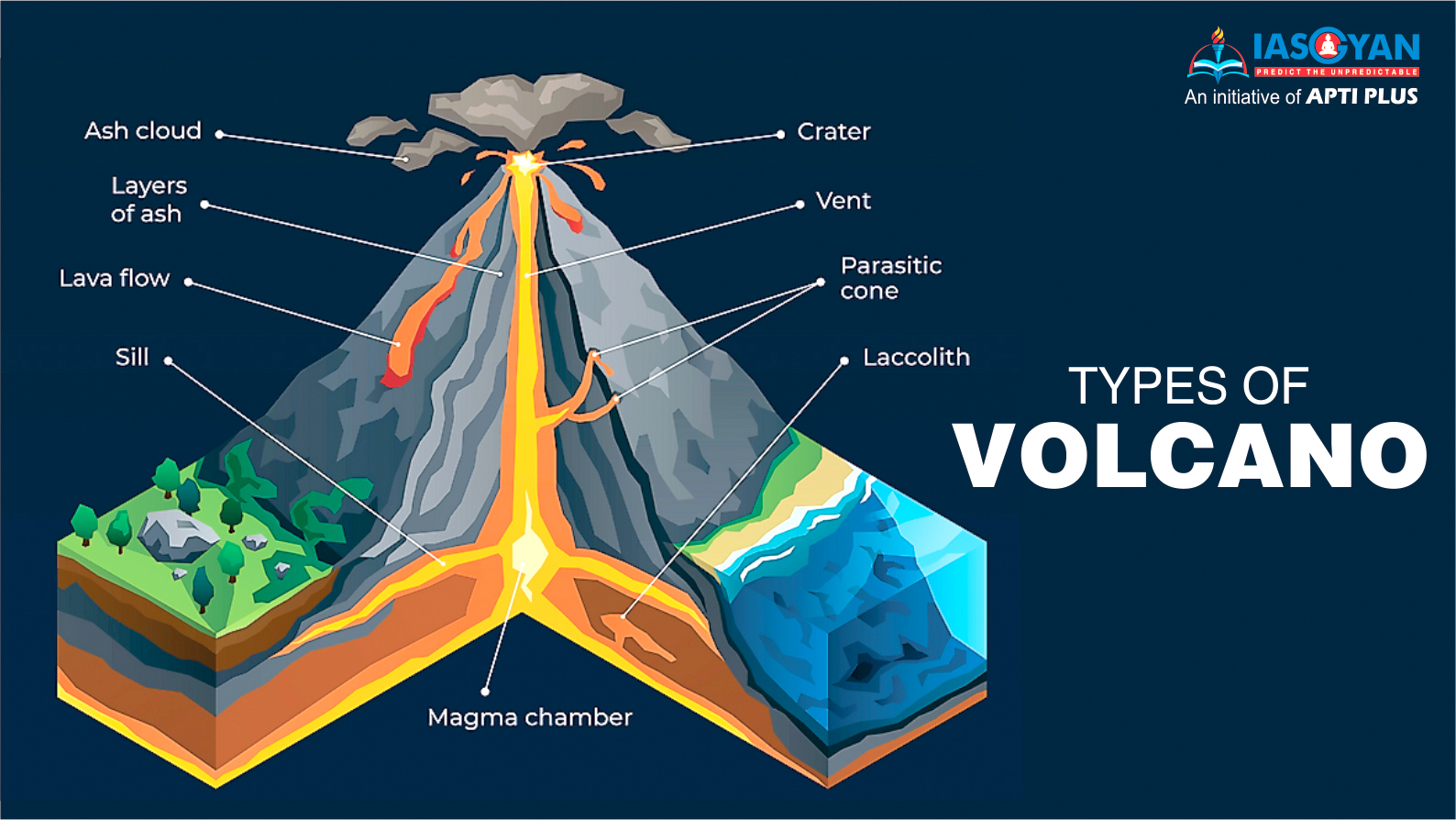
When magma erupts at the surface as lava, it can form different types of volcano depending on:
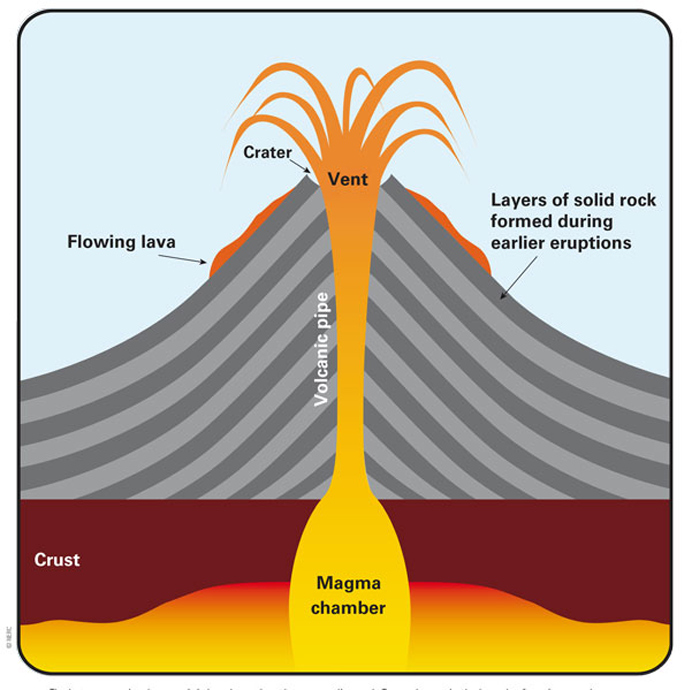

Shield volcanoes
Where a volcano produces low viscosity, runny lava, it spreads far from the source and forms a volcano with gentle slopes: a shield volcano. Most shield volcanoes are formed from fluid, basaltic lava flows. Mauna Kea and Mauna Loa are shield volcanoes. They are the world’s largest active volcanoes, rising over 9 km above the sea floor around the island of Hawai’i.
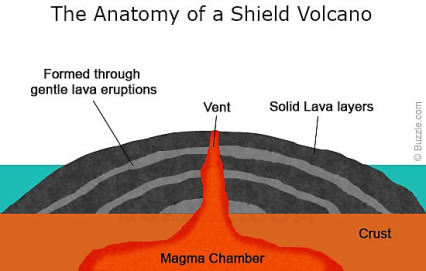
Stratovolcano
Stratovolcanoes have relatively steep sides and are more cone-shaped than shield volcanoes. They are formed from viscous, sticky lava that does not flow easily. The lava therefore builds up around the vent forming a volcano with steep sides. Stratovolcanoes are more likely to produce explosive eruptions due to gas building up in the viscous magma.
Andesite (named after the Andes Mountains), is perhaps the most common rock type of stratovolcanoes, but stratovolcanoes also erupt a wide range of different rocks in different tectonic settings.
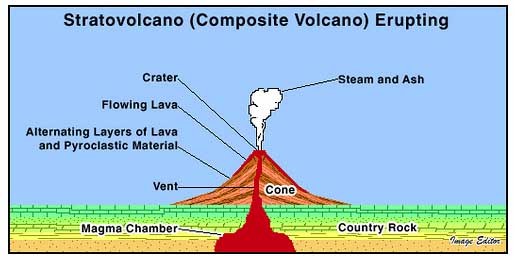
Lava dome
The Soufrière Hills volcano, on the Caribbean island of Montserrat, is well known for its lava dome complex at the summit of the volcano, which has gone through phases of growth and collapse. As viscous lava is not very fluid, it cannot flow away from the vent easily when it is extruded. Instead it piles up on top of the vent forming a large, dome-shaped mass of material.
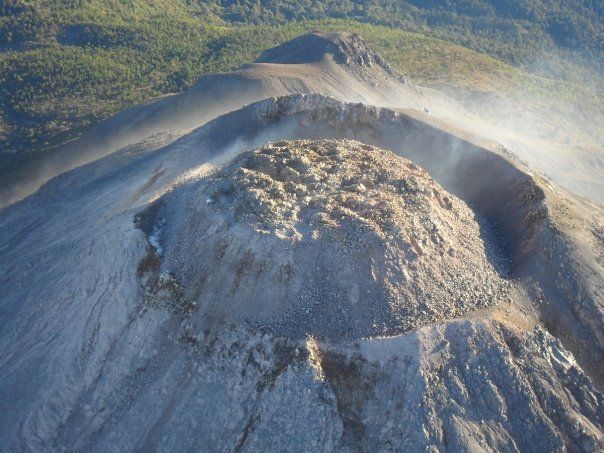
Caldera
Magma is stored beneath a volcano in a magma chamber. When a very large, explosive eruption occurs that empties the magma chamber, the roof of the magma chamber can collapse to form a depression or bowl with very steep walls on the surface. These are calderas and can be tens of miles across.
Calderas can also be formed during an eruption that removes the summit of a single stratovolcano. Caldera-forming eruptions can remove massive portions of a single stratovolcano. The top can literally be blown off!
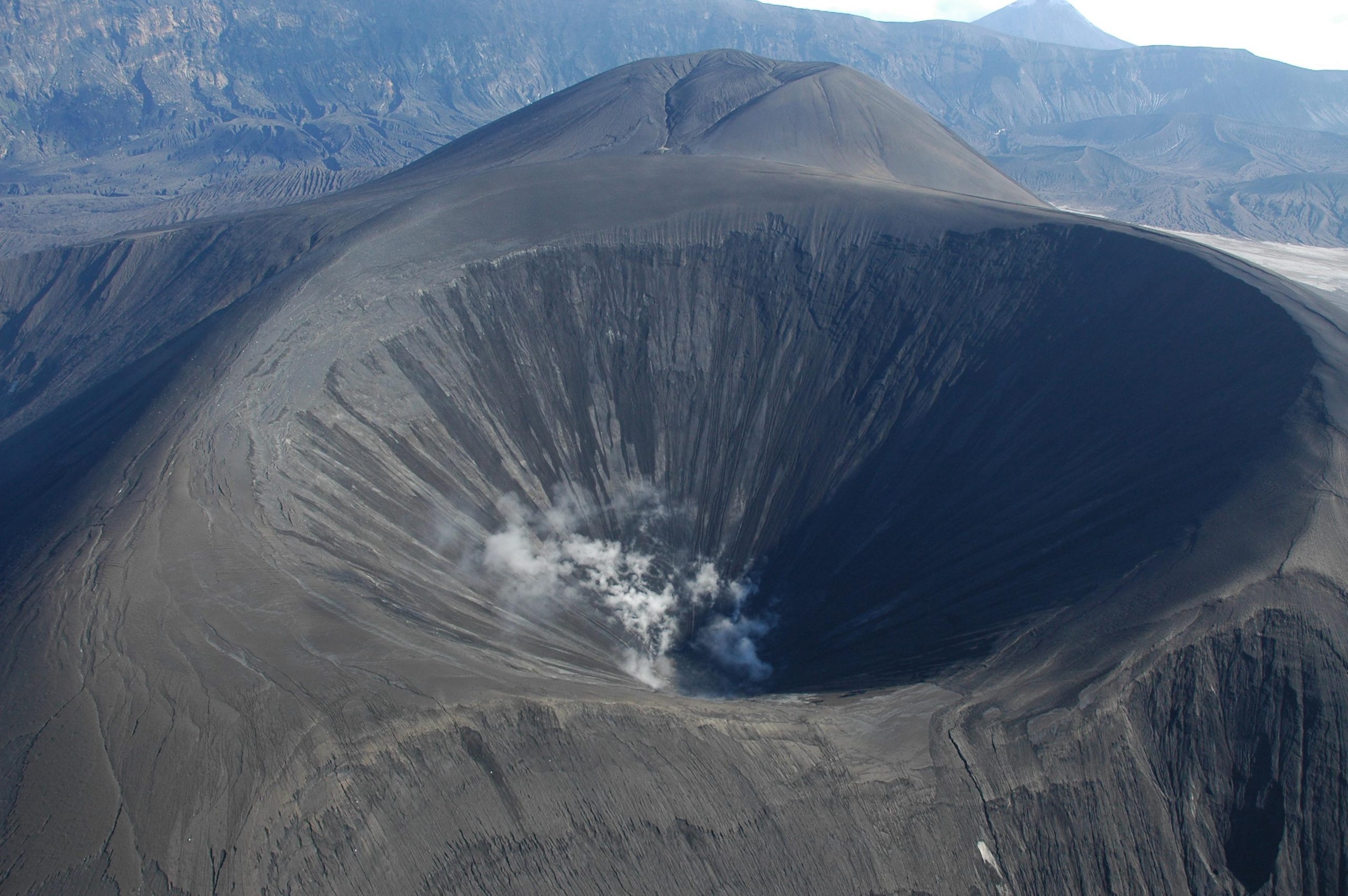

Cinder Cone
A cinder cone is a steep conical hill of loose pyroclastic fragments, such as volcanic clinkers, volcanic ash, or cinder that has been built around a volcanic vent. The pyroclastic fragments are formed by explosive eruptions or lava fountains from a single, typically cylindrical, vent. As the gas-charged lava is blown violently into the air, it breaks into small fragments that solidify and fall as either cinders, clinkers, or scoria around the vent to form a cone that often is symmetrical; with slopes between 30–40°; and a nearly circular ground plan. Most cinder cones have a bowl-shaped crater at the summit.
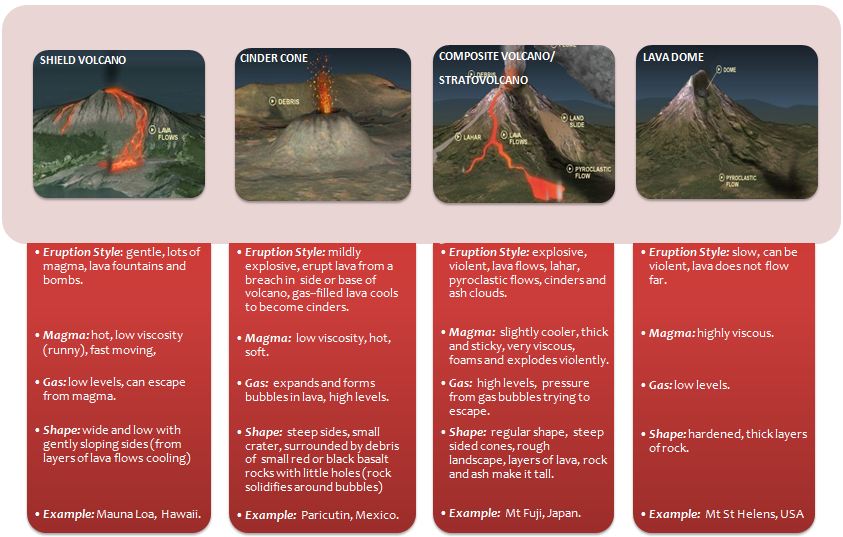
Disclaimer: No Copyright infringement intended.
© 2026 iasgyan. All right reserved